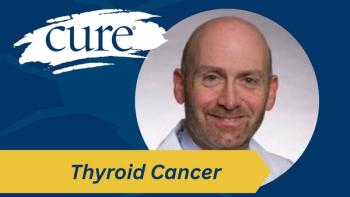
New Treatments in Breast Cancer May Lead to Less Toxicity, Improved Response Rates
Drugs like PARP inhibitors, immunotherapy and antibody-drug conjugates are making a great impact on the treatment of patients with several subtypes of breast cancer.
Clinical trials in the breast cancer space have been focused on treatment options with high response rates and fewer side effects, potentially changing the landscape of breast cancer treatment.
At the 12th Annual Joining FORCEs Against Hereditary Cancer Conference, Dr. Melinda Telli, an associate professor of medicine at Stanford University School of Medicine in California and director of the breast cancer program at Stanford Cancer Institute, discussed recent data on treatments for cancer subtypes including early-stage BRCA1/2 breast cancer, triple-negative breast cancer and advanced breast cancer.
PARP inhibitors in early-stage BRCA1/2 associated breast cancer
Data have been recently presented on the use of Lynparza (olaparib) following standard-of-care treatments — including surgery, chemotherapy, hormone therapy or radiation therapy, in patients with BRCA1/2-mutant, early HER2-negative breast cancer who are at high risk for disease recurrence. In the
Telli commented that there are several implications of these results.
“First off, based on these results, we do expect that (Lynparza) will be approved for this indication. But certainly, we're going to need to expand our testing for BRCA1/2 in early breast cancer to better identify who are the patients who would benefit from this treatment. And certainly, that is complicated. We need to change our testing guidelines and overcome things around insurance or payer coverage.”
A recent analysis of patients with newly diagnosed breast cancer in Georgia and California from 2013 to 2017 demonstrated that about a quarter of patients received genetic testing. In particular, some patients received testing for BRCA1/2 only, while others received multigene panels.
A phase 2 trial was also recently presented at an oncology meeting — NEOTALA — which focused on another PARP inhibitor, Talzenna (talazoparib), for the treatment of patients with germline BRCA1/2 mutation-positive, HER2-negative breast cancer before undergoing breast surgery. Nearly 50% of patients who received Talzenna before surgery had a complete response (disappearance of all signs of cancer) to treatment
“That is around the type of complete response rate that we typically see with combination chemotherapy for triple-negative breast cancer with a BRCA1/2 mutation, so I think this is really provocative data,” Telli said.
Although NEOTALA was a small trial with 61 patients, “the hope is that these approaches will continue to be studied to see if this could be an option for more patients in the future, a chemotherapy-free treatment regimen,” she added.
Immunotherapy in triple-negative breast cancer
Immune checkpoint inhibitors include PD-1 and PD-L1 targeting antibodies, according to the presentation. In particular, PD-1 is a receptor on T cells that inhibits killing by T cells when it binds to PD-L1, which is expressed on tumors or in the tumor microenvironment.
“(PD-L1) essentially turns that T cell off,” Telli said. “The T cell can’t come in and attack that cancer cell. What these drugs try to do is just bind to interfere with the PD-1 and PD-L1 coming together so that the T cell is then free to go and carry out if effector function.”
One of the biggest studies assessing this in triple-negative breast cancer is the
“There was able a four-month improvement in this progression-free survival,” Telli mentioned. “That led to an
Updated data from this study also demonstrated that adding Keytruda to chemotherapy improved overall survival (percentage of patients who are still alive after starting cancer treatment), with an estimated seven-month improvement.
“These data did help to convert that accelerated approval into a full approval, again, for the firstline treatment of metastatic triple-negative breast cancer that PD-L1-positive,” Telli added.
Another phase 3 trial —
In addition, findings from the Keynote-522 trial demonstrated that patients assigned Keytruda with chemotherapy before surgery had a higher rate of distant progression- or distant recurrence-free survival compared with those assigned chemotherapy with placebo (87% versus 80.7%). Some immune-mediated side effects did occur in the Keytruda-chemotherapy group, some of which are different from typical chemotherapy, according to the presentation. These include high or low thyroid levels, skin reactions, adrenal insufficiency, lung inflammation, intestinal inflammation or liver inflammation.
“Fortunately, some of those events are uncommon, but certainly we see more of these types of side effects when (Keytruda) is given compared to chemotherapy alone,” Telli said. “As we start to use this more and more in the early-stage setting, we have to be very mindful of these side effects so that patients can get the benefit from the drug, but not be in a position where they are at risk for very severe toxicities, so (it is) important to monitor, be aware of the side effects and promptly treat and discontinue the drug if there are more severe side effects.”
New antibody-drug conjugates in advanced breast cancer
An antibody-drug conjugate that’s gaining a lot of attention in the research space is Enhertu (trastuzumab deruxtecan), which targets HER2. Enhertu was evaluated in an early-phase study in patients with HER2-positive metastatic breast cancer who were heavily pretreated. Due to the positive activity that Enhertu demonstrated in these patients, findings from that study resulted in an FDA approval for HER2-positive metastatic breast cancer.
Another drug in this category — Trodelvy (sacituzumab govitecan) — recognizes a protein called TROP-2 that is present on many solid tumors including breast cancer. In the
“What we saw in the study is that the (Trodelvy) in this setting really outperformed standard chemotherapy,” Telli mentioned. She added that findings from the ASCENT trial led to the full FDA approval for metastatic triple-negative breast cancer.
Some of the side effects that occurred with Trodelvy included low white blood cell counts and some gastrointestinal side effects like nausea and diarrhea.
“There are more chemotherapy-like side effects with this drug, but it is an active agent and is being evaluated in additional studies earlier in the treatment of triple-negative breast cancer,” Telli added.
Recently, the
Of note, patients treated with Enhertu in the DESTINY-Breast03 trial had an estimated 11% risk for lung inflammation, although most of these events were of a lower grade.
“That was reassuring that we didn’t see any of the more severe high-grade events in this trial,” Telli concluded. “This has certainly led to a change in the standard of care for HER2-positive metastatic breast cancer.”
Some recent early data assessing datopotamab deruxtecan showed activity in triple-negative breast cancer with potentially fewer side effects than Trodelvy. There are currently two large studies that will be launched that will be observed in patients with metastatic triple-negative breast cancer and those with hormone receptor-positive, HER2-negative breast cancer
For more news on cancer updates, research and education, don’t forget to




